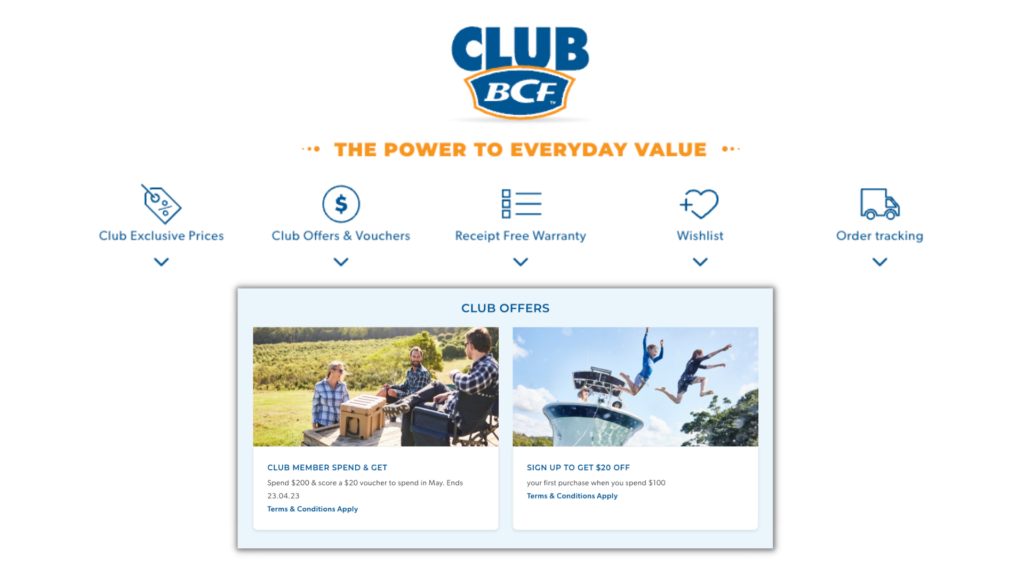
Customer loyalty programs are powerful marketing tools that can transform your ecommerce business by building strong customer relationships, increasing repeat purchases, and driving growth.
According to Gartner, 1 in 3 businesses without a loyalty program today will establish one by 2027 to shore up first-party data collection and retain high-priority customers.
What is a Customer Loyalty Program?
A customer loyalty program is a marketing strategy designed to encourage customers to make repeat purchases, engage with your brand, and become loyal, long-term patrons.
These programs reward customers for their continued support by offering incentives, such as discounts, freebies, or exclusive access to products and services.
A recent study by Hubspot showed customers are more than 50% more likely to try a new product, and spend 31% more than new customers.
The Benefits of Loyalty Programs
Loyalty programs offer numerous advantages for all types of businesses, including:
Increased Customer Retention: By rewarding customers for their continued support, loyalty programs encourage repeat purchases and help you retain valuable customers.
Enhanced Customer Lifetime Value: Loyal customers tend to spend more and make more frequent purchases, boosting your overall revenue and profits.
Positive Word-of-Mouth: Satisfied customers who enjoy your loyalty program are more likely to recommend your brand to friends and family, increasing your potential customer base.
Valuable Customer Insights: Loyalty programs can help you collect valuable data on customer preferences and behaviour, allowing you to make informed decisions about marketing, product offerings, and customer service. When a customer provides this information directly to your business, this is called first-party data.
According to ZenDesk 72% of global customers feel loyalty toward at least one brand or company.
Top 5 Types of Loyalty Programs
There are several types of loyalty programs that you can implement for your ecommerce business. These are some of the most popular options:
1. Points-based Programs: Customers earn points for every purchase or action they take, such as signing up for a newsletter or referring a friend. The number of points earned is typically proportional to the amount spent. These points can be redeemed for rewards, such as discounts, free items, or exclusive products.
2. Tiered Programs: In this type of program, customers advance through different levels or tiers as they make more purchases or complete specific actions. Each tier offers increasing rewards and benefits, encouraging customers to continue shopping and engaging with your brand.
3. Cashback Programs: In cashback loyalty programs, customers receive a percentage of their purchase value back as store credit, cash, or a credit towards future purchases. The cashback percentage may be fixed or vary based on the product category or total spending.
4. VIP or Membership Programs: VIP or membership-based loyalty programs usually require customers to pay a one-time or recurring fee to join an exclusive club that offers special perks and benefits. These benefits can include free shipping, early access to sales or new products, members-only discounts, and personalised customer service.
5. Hybrid Programs: Some loyalty programs combine elements from different program types to create a more comprehensive and engaging customer experience. For example, a business might offer a points-based system with tiered rewards, where customers earn points for purchases and unlock higher tiers with better rewards as they accumulate more points.
Each of these program types works differently to engage customers, encourage repeat purchases, and foster long-term loyalty.
Why choose a certain type of loyalty program?
It’s crucial for you to consider different types of loyalty programs because each type caters to diverse customer needs, preferences, and motivations.
By evaluating various program types, you can select the one that best aligns with your goals, target audience, and brand identity.
Customer Preferences: Different customers have distinct preferences and expectations when it comes to rewards and incentives. Some may prefer points-based systems, while others may find tiered or cashback programs more appealing. By evaluating various loyalty program types, you can identify the structure that best resonates with your target audience and delivers the most value.
Business Goals: The choice of a loyalty program type should be driven by the specific goals your business aims to achieve. For instance, points-based programs can be effective in encouraging frequent, smaller purchases, while tiered programs may help drive higher spending to reach the next reward level.
Brand Identity: The loyalty program should align with your business’s brand identity and overall customer experience. For example, a luxury brand might opt for a VIP or membership-based program to offer exclusive perks and maintain a premium image. Considering various types of loyalty programs enables you to find the one that best compliments your brand positioning.
Competitive Landscape: Evaluating different types of loyalty programs helps businesses differentiate themselves in a competitive market. By choosing a unique or innovative program structure, your business can stand out from competitors and provide customers with a compelling reason to stay loyal.
Financial Sustainability: Different loyalty program types have varying cost structures and financial implications. It’s essential for you to consider which type of program is the most financially sustainable while still providing value to customers. Balancing rewards and costs is crucial for the long-term success of a loyalty program.
How to Start a Loyalty Program: 5 Key Steps
Ready to create your own loyalty program? Follow these five steps to get started:
1. Set Clear Goals: Begin by determining what you want to achieve with your loyalty program. Common goals include increasing customer retention, boosting average order value, or encouraging referrals.
2. Choose the Right Program Type: Select the type of loyalty program that aligns with your goals and appeals to your target audience.
3. Develop a Reward System: Design a reward system that offers value to your customers while also being financially sustainable for your business.
4. Promote Your Program: Make sure your customers know about your loyalty program by promoting it through email marketing, social media, and on your website.
5. Track and Measure Success: Monitor the performance of your loyalty program, and make adjustments as needed to optimise its effectiveness.
Using Your Loyalty Program Effectively
To maximise the impact of your loyalty program, it’s important to give it the attention it deserves as a key part of your plan to increase revenue.
Personalise the Experience: Tailor your rewards and communications to each customer based on their preferences, shopping history, and behaviour.
Communicate Regularly: Keep your customers informed about their rewards and program updates through email, social media, and in-app notifications.
Encourage Social Sharing: Motivate customers to share their experiences with your brand and loyalty program on social media, amplifying your reach and attracting new customers.
Loyalty Program Examples: 4 Australian Brands Nailing It
1. Adore Beauty’s Adore Society
Adore Beauty, an Australian online beauty retailer, offers a tiered loyalty program called Adore Society.
Members earn Adore Society points for every dollar spent, writing product reviews, and referring friends. As customers accumulate points, they unlock higher membership tiers with increased benefits, such as birthday rewards, exclusive promotions, and early access to sales.
This program encourages customers to shop more frequently and engage with the brand to enjoy better rewards.

2. BCF Club
BCF, a business specialising in boating, camping, and fishing products, offers a loyalty program called the BCF Club. Members receive various benefits, such as exclusive offers and promotions, personalised deals, access to club events, and sneak peeks at new product releases.
Additionally, BCF Club members receive a $10 voucher for their first purchase after joining and a $10 voucher on their birthday.
This program encourages customers to stay engaged with the brand and make regular purchases by providing a range of exclusive rewards and personalised deals.

3. Priceline Sister Club
Priceline, an Australian health and beauty retailer, operates the Sister Club loyalty program. This tiered program rewards customers with points for every dollar spent at Priceline stores.
As customers reach specific spending levels, they progress through the membership tiers and receive a range of benefits, including discount vouchers, exclusive offers, and priority access to sales events.
The program aims to incentivize frequent shopping and higher spending to unlock better rewards.

4. Showpo’s Showpo Club
Showpo, an Australian online fashion retailer, offers a VIP loyalty program called Showpo Club. For an annual fee, members enjoy a range of exclusive benefits, including free express shipping on all orders, early access to sales and new arrivals, and members-only discounts and promotions.
This VIP-style program creates a sense of exclusivity and fosters long-term loyalty by providing valuable perks to customers who join the Showpo Club, encouraging them to continue shopping with Showpo.

Customer loyalty and rewards programs aren’t just nice-to-haves for businesses, they are becoming must-haves as we move into a new world of first-party marketing.
By understanding what they are, the different types available, and how to implement and use them effectively, you can create a program that drives customer retention, boosts revenue, and fosters long-term loyalty.
Remember, the key to success lies in offering value to your customers while creating an engaging and personalised experience. Happy rewarding!

